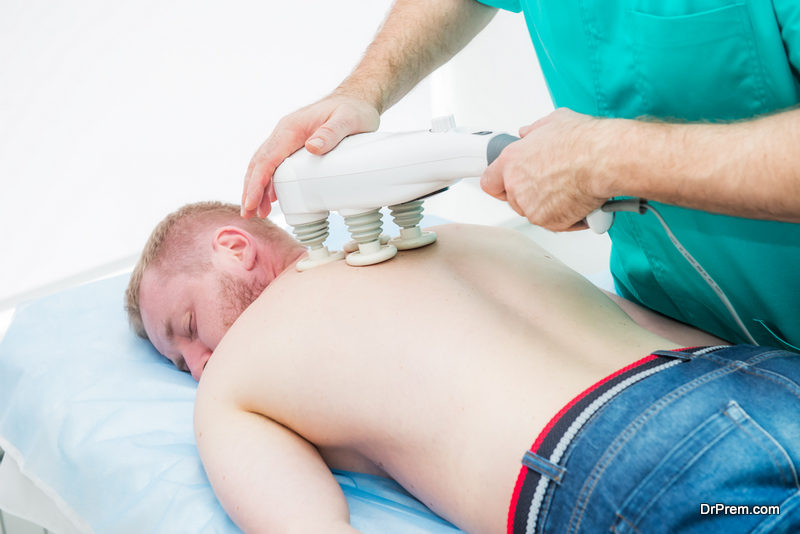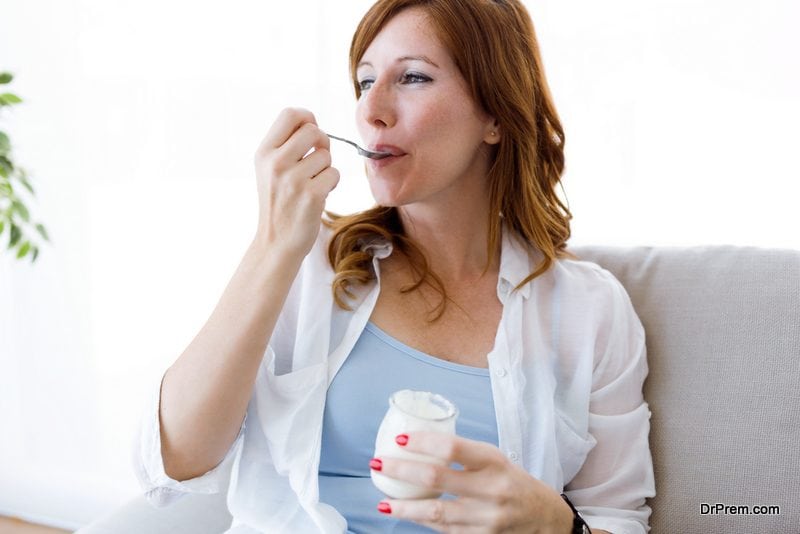Detox. Rehab. Withdrawal. These are the words most commonly associated with recovery. But just because these are the most common ways to treat drug or alcohol addiction, it doesn’t mean they’re your only options. For those seeking alternative, and sometimes unconventional, ways to help them through the recovery process, this article is for you. Keep reading to unearth six tools you didn’t know you needed to successfully recover from your addiction.
1. Transcranial Magnetic Stimulation
 While this sounds like some sort of science experiment, rTMS actually has some scientific backing in regards to how it can benefit addicts and the recovery process. Doctors use magnetic pulses to alter brain waves and activity. These modifications are said to offer long-lasting effects in the patient’s behavior — including a diminished desire to use drugs. Doctors may even be able to alter cravings and feelings of dependency all together.
While this sounds like some sort of science experiment, rTMS actually has some scientific backing in regards to how it can benefit addicts and the recovery process. Doctors use magnetic pulses to alter brain waves and activity. These modifications are said to offer long-lasting effects in the patient’s behavior — including a diminished desire to use drugs. Doctors may even be able to alter cravings and feelings of dependency all together.
Another similar procedure is known as neurofeedback. During this process, your doctor uses EEG (electroencephalography) sensors to monitor a patient’s brain activity. This activity is then fed back (hence the name) to the computer, which displays the person’s brain waves. At this point, the patient can interact and alter their brain waves in real time. So how does this help with addiction? Some patients reported the ability to address feelings and thoughts of anger, depression, and even medical conditions that once drove them to use. Without these emotions driving their addiction, patients were less inclined to turn to substance abuse for relief.
2. THC and CBD
Marijuana — once claimed to be the gateway drug is actually being used to help wean addicts off of heavy, more dangerous drugs, including prescription pills. Marijuana is mostly used to help treat those with opioid addiction. Patients who suffer from chronic pain often turn to painkillers for relief. The problem is, they become dependent on these drugs and continue taking more out of fear of returning to a place of pain and discomfort. But recent studies show that both CBD and THC (two cannabinoids found in marijuana) can help reduce pain and inflammation. Not only that, but most users never become addicted to marijuana and very rarely overdose on the drug. More good news is that marijuana for medicinal purposes is growing in popularity and being legalized across the country!
3. Therapy and Hypnosis
 Therapy is an often undervalued way of treating addiction. While most rehab facilities offer support groups and may have a therapist on hand, not all patients are open to the amazing benefits therapy has to offer. A trained psychologist can help addicts uncover the root of their problem. After all, something made them turn to drugs or alcohol for relief – be it a traumatic event, long-term abuse, or other feelings of sadness and isolation. People turn to drugs and alcohol to numb or forget about the pain they’re feeling. Once the root of that pain is found, it can be eradicated, and in-turn, eradicate the addict’s need for an escape. While this may sound simple, therapy takes time, patience, and an open mind.
Therapy is an often undervalued way of treating addiction. While most rehab facilities offer support groups and may have a therapist on hand, not all patients are open to the amazing benefits therapy has to offer. A trained psychologist can help addicts uncover the root of their problem. After all, something made them turn to drugs or alcohol for relief – be it a traumatic event, long-term abuse, or other feelings of sadness and isolation. People turn to drugs and alcohol to numb or forget about the pain they’re feeling. Once the root of that pain is found, it can be eradicated, and in-turn, eradicate the addict’s need for an escape. While this may sound simple, therapy takes time, patience, and an open mind.
The same goes for hypnosis, which is a somewhat less accepted form of therapy, but one that many people believe in. The purpose of hypnosis is to help patients escape from their conscious mind and tap into their subconscious. Once the hypnotist achieves this, together, you can alter your beliefs and thoughts on a particular topic — including addiction. It’s believed that our subconscious mind is what truly controls our thoughts and actions. By altering these, you can then alter your behavior.
4. Exercise
Exercise does wonders for the body — both inside and out. And while some addicts may need to wait until they’re in a healthy place to start vigorous exercise, even starting off with a short walk each day is a step in the right direction (literally). The most beneficial form of exercise for addicts, though, is high-intensity aerobics. Things like HIIT workouts, swimming, or even spin classes, force your body to produce endorphins and high levels of the feel good chemicals serotonin and dopamine. Why is this important for addicts? Drugs also elicit the same feelings and trigger the brain to release the hormones. The problem is, after extended use, the body stops naturally producing serotonin and dopamine because it knows your body will get it elsewhere (from the drug). That means even achieving normal levels of happiness for addicts is nearly impossible without their drug of choice. By introducing exercise into your recovery routine, you’re retraining your brain to make and release these chemicals, which means feeling good without the need for illegal substances.
5. Nutrition
 It seems only natural to move from exercise directly into nutrition. No, this isn’t a diet or weight loss plan (although those might be added beneficial side-effects). Exercise and nutrition are the foundation of good health, so it’s no big surprise that they’re also instrumental in the recovery process. The foods you eat (and the ones you choose not to) play a large part in your overall attitude and state of mind. Introduce: biochemical restoration. This dietary approach focuses on repairing the body’s biochemical imbalances that cause depression, anxiety, cravings, and yes, addiction! Certain imbalances in the brain might actually put people at a higher risk for addiction. Lack of proper nutrition may actually cause an imbalance in neurotransmitters in the brain, leading to inflammation, fatigue, and stress. Doctors will determine in which areas addicts are nutritionally deficient and then develop an individualized plan to help restore balance and harmony in the body. This could help curb cravings, boost mood naturally, and reduce the risk of dependency and relapse.
It seems only natural to move from exercise directly into nutrition. No, this isn’t a diet or weight loss plan (although those might be added beneficial side-effects). Exercise and nutrition are the foundation of good health, so it’s no big surprise that they’re also instrumental in the recovery process. The foods you eat (and the ones you choose not to) play a large part in your overall attitude and state of mind. Introduce: biochemical restoration. This dietary approach focuses on repairing the body’s biochemical imbalances that cause depression, anxiety, cravings, and yes, addiction! Certain imbalances in the brain might actually put people at a higher risk for addiction. Lack of proper nutrition may actually cause an imbalance in neurotransmitters in the brain, leading to inflammation, fatigue, and stress. Doctors will determine in which areas addicts are nutritionally deficient and then develop an individualized plan to help restore balance and harmony in the body. This could help curb cravings, boost mood naturally, and reduce the risk of dependency and relapse.
Recovering from drug or alcohol addiction is about more than just checking yourself into rehab (although that’s always one of the best choices). The good news is, you can incorporate these tips and recommendations into your current recovery plan. The more resources the better! And these tools will benefit both your mind and your body, keeping you on track for a successful recovery.
Article Submitted By Community Writer




